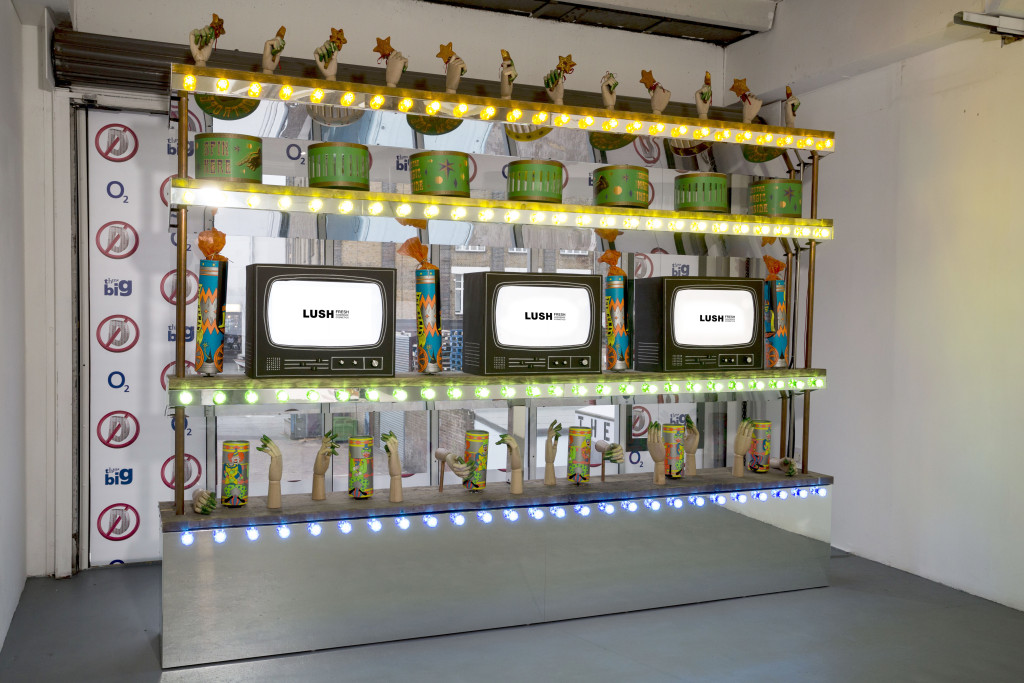Current markets have adopted new flows, through which they never stop evolving, adapting and changing. The content driving those markets shifts every second and is generated by its actual users. The analytics and data extraction from profiles and behaviours is what shapes formats and shifts the direction of big corporate platforms, like Amazon, Lush, or even the ‘mindfulness’ boom.
Dissent as an iPhone App is a multi-layered project curated by Àngels Miralda, running at London’s Arebyte gallery from March 19 to April 16, 2016, as a part of its 2016 Legal Aesthetics programme. The physical exhibition is just a fragment of the greater project, which aims to extend its influence into the interactive realm in an app, also called Dissent as an iPhone App. It can be downloaded from the internet and contains information on projects, artists and art pieces in the exhibition, in addition to an open forum for discussion and instruction to take part in the evolution of some of the work. To an extent, the Dissent app serves as a virtual spread of the show, also as an alternative to the traditional paper press release, which, in the absence of a viewer’s personal iPhone, is also available in tablets on two stands at the gallery wall.

Dissent as an iPhone App, which takes its title from New York-based curator and writer Joshua Decter’s Art is a Problem, explores the potential of critique from within: how can one be critical towards the (art) system while remaining part of it? How can art reflect the reality of markets and user’s behaviour, not only in its themes, in its outputs and formats?
A crossed-out 3D logo appears half way up the stairs of the industrial building where Arebyte is located. It welcomes the visitor with the corporate aesthetics and tactics that not only lead the show but already subsume so many existing art practices.
In the middle of the main room, a rectangular podium holds a set of domestic objects collected by Débora Delmar Corp. The collection called ‘Most Wished For’ (2016) includes products, such as a vacuum cleaner categorised as ‘Business, Industry and Science’, a baby haircut set as ‘Baby’, clothes as ‘Clothing’, an adult colouring in book called Animal Kingdom in ‘Books’, a set of hairbrushes as ‘Beauty’ and a Black & Decker dustbuster categorised as ‘Cars and Motorcycles’. Their only special feature is that they represent the ‘most wished for’ objects of Amazon customers, which becomes obvious through the labels accompanying them, depicting their name, category, and the date they were most wished for. The readymade works and their arrangement changes every week, depending on Amazon’s data, which keeps fluctuating and affecting the movement of the installation.

On a side of the podium, a white and worn suitcase emits the sound of some contemporary mantras recited by a recorded voice. ‘Untitled (Venom)’ (2016) is a collaboration between Daniel Keller and Ella Plevin, where enhancing sentences which aim to sustain a harmonious mental equilibrium, instead become exhausting and meaningless background noise through its incessant repetition.
Saemundur Thor Helgason’s ‘Commissioned by Lush Cosmetics’ (2016) is visible, glowing behind the window glass, from the Arebyte building yard. Wooden mannequin hands partly painted in green, magical spinning zoetropes and a set of fake cardboard TVs depicting vintage-looking footage of product promotions are neatly placed on a large metallic shelf. The installation was once exhibited by cosmetics brand LUSH at their shop in Oxford Circus and through this conscious dislocation Helgason gives visibility to the generally hidden process of making a living as an artist. Money tends to be a taboo and the way many artists survive economically remains shrouded in mystery. In response, this sort of ‘unreadymade’ has a very precise and pragmatic purpose: to minimise the labour and maximise the profit of an artist, blurring the two realms of the ‘survival side job’ and ‘artistic career’.
Commercial strategies and psychologies are often applied to both art and commercial economics, and Dissent as an iPhone App aims to unravel them and make them visible, while creating a physical and virtual space for doubt and discord in reaction to the fallacy of certainty and stability that art, economics and its mediation often implies.**













